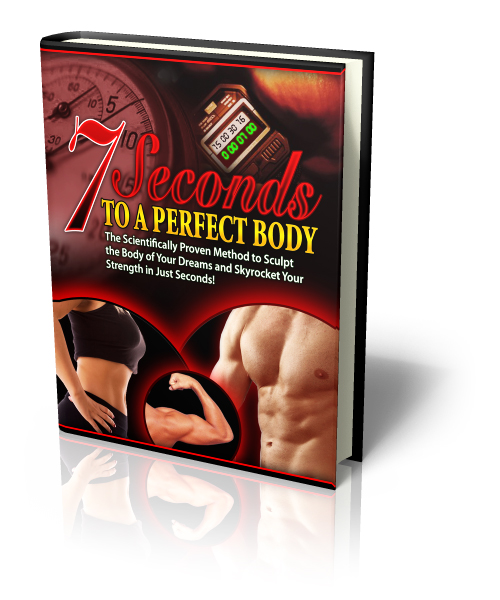Calisthenic
Body Weight Training Get's Blasted
By Paul "Batman" O'Brien
B.A., N.C.E.H.S., Dip. Acu., Cert Clin. IMed., Dip. Adv. OBB, Dip. CHM, Pn1, PN-SSR, PN-NCA, M.AFPA., M.C.Th.A.
Calisthenic Exercise is also spelt "Callisthenic" but thousands of people spell that word differently everyday, so let's not worry about the spelling too much and instead focus on the benefits of this type of training. In this article I'll give you a heads up about but also to give them a heads up on what this type of training is all about.
What is Calisthenic Exercise?
Simply put it's bodyweight exercise. In addition there is often a element of rhythm and timing to them and are often performed to a music with a good beat.
The goal of calisthenics is to increase strength and range of motion using a variety of activities, from simple on the spot exercises like push ups and sit ups to move plyometric and high impact activities like jumping jacks, box jumps etc.
To add more fuel to the fire they are often mixed with static stretches....and perhaps at this stage you can guess the number of problems I have with the typical calithenic practice...
IMPORTANT TRAINERS TIP

If you need a detailed training guide (and believe me when you see the results of your Isometric Workout you'll want one) I've written a comprehensive guide to Isometrics called 7 Seconds to A Perfect Body. It's over 250 pages long, with hundred of step by step images to help you get your angles correct and even step by step work along video guides. You can check it out here.
Okay, what's the problem, it sound like a typical Phy Ed class?
And you'd be right. An awful lot of calisthenics form the basis of the average PE (physical education) class. You also find it in military schools, team sports and coaching and even in the dojo (traditional martial arts training hall).
For the most part it's a terrible idea.
The Problems with Calistenics
I have a couple of issues with Calisthenics, and on the other hand I absolutely LOVE them if done correctly. Let me give you the run down on the major issues as I see them....
1) Sub Maximal
Claisthenics involve moving the body through a range of motion - that, by it's very essence means they are SUB-MAXIMAL. Now in MANY other articles on this site I discuss the need for a maximal muscle stimulation to produce maximal muscle responses....
Very briefly though - there are different types of muscle fibres in your body;
- Slow Twitch
- Fast Twtich and
- Intermediate Fibres (you can train them to be either fast or slow).
Now because bodyweight based calisthenics are sub maximal they primarily train the Slow Twitch and Intermediate fibres - that means you have to do hundreds of them to make inroads into the Fast Twitch fibres - and if you want big, strong muscles then the Fast Twitch fibres are the one you want to stimulate.
I much prefer to train my Fast Twitch fibers directly and develop rapid increases in strength and muscle - for that I use ISOMETRICS - the whole subject of this site! ;-) So you can learn all about them - here.
With this in mind let's look at problem 2....
2) Repetitions and Time Wasting
Yeah I'm not a fan of wasting my time...I like fast efficient results so I can get back to doing what's important like spending time with my family, friends and loved ones...or training in martial arts...or any of my other hobbies and interests. And sadly - incorrectly done calisthenics waste time.
They waste time because you need to do repetitions of a given movement in order to get any benefit from them - again this is because they are sub-maximal. Calsithenic exercise requires you to fatigue the muscles with a series of full range contractions and relaxations. The idea being that people will fatigue the Slow Twitch tissue and stimulate the Intermediate tissue. And that they will - but they RARELY hit the FG fibres, the Fast Twitch fibres - those responsible for powerful muscles.
So not only are they failing to hit the target muscle tissue they require you to spend more time than necessary on doing attempting to do it - then it would actually take to do it! That's frustrates the hell out of me and brings me to problem number 3....
3) Injury
Repetitions result in injury. Every rep you take causes shearing of the joints, a wearing of the cartilage and contributes to long term damage of the body. In addition, because calisthenic exercises are often combined with static stretching it is a near guarantee that you will get injures. Pulled hamstrings, worn knees, knackered hips and busted backs are common results of [poor calisthenic practice.
You can read more on the problem of repetitions - here
And though I briefly touched on it already...problem 4
4) Stretching
Static stretching is a mainstay of many fitness classes, PE classes, soccer/football practice, sports team coaching, martial arts classes and more. And it makes me cringe every time I see it. Why on earth would those interested and those coaching people in physical performance continue with something that has long been shown to be BAD FOR YOU!!!!
Static stretching is a TERRIBLE IDEA -
- It does not imporve sports perfromance
- It does not improve flexibility.
On the other hand:
- It DOES INREASE INJURY
Why do I say this?
Static stretching involves placing a muscle in an elongated position, past it’s usual comfort zone and requires you to slowly stretch or pull the fibres apart and then stay there. It usually hurts just a little. This lack of movement means it’s static – and you just hold a position for say 30 seconds. Then do something else.
The problem is that firstly - most people aren't "stretching" a muscle. They are stretching supportive tissue like tendons and ligaments which you NEED to STAY TIGHT - otherwise you'll end up easily dislocating a knee or shoulder or end up with chronic back problems. This is why people get an increase in flexibility and range of motion. They haven't stretched the muscle - they've weakened the joint!
You can be sure I am NOT A FAN.
So with all that being true -
WHY DO I TEACH AND TRAIN WITH CALISTENIC EXERCISES?....
Well, if you do them right....and for the right reasons they are one of the best systems of exercising out there...the why and how I'll reveal in the next article.... ;-)
You've been reading about calisthenic exercise, return to the Isometric-Training Home Page Here
or










New! Comments
Have your say about what you just read! Leave me a comment in the box below.